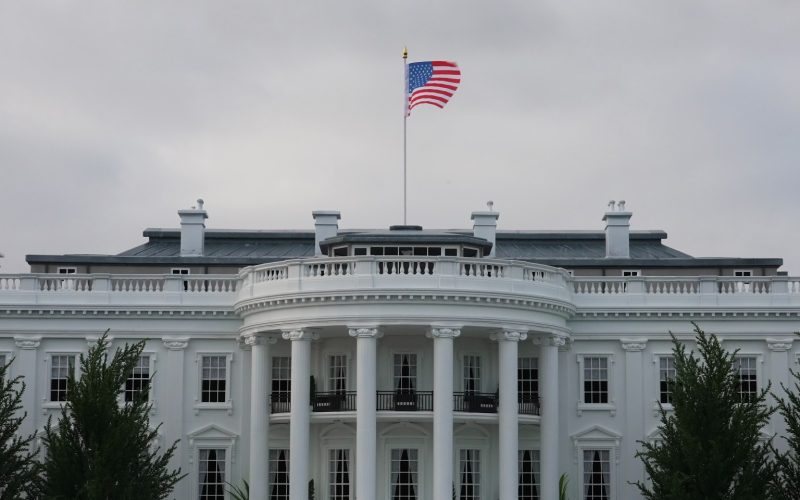With US President Trump's unprecedented tariff regime reshaping global trade, sparking market volatility, and prompting strategic recalibrations among global investors, our portfolio managers share insights on the longer-term implications for financial markets.
Janus Henderson has been navigating change on behalf of investors for more than 90 years and our portfolio managers have been sharing insights during the recent period of volatility. Here, we summarise some of their key thinking from a range of asset class perspectives.
Global Equities: Attractive entry points
Marc Pinto, Head of Americas Equities
So where are the opportunities in all this? When markets get dislocated, sometimes the baby gets thrown out with the proverbial bathwater. In these situations, our portfolio managers and analysts look for those high-quality companies that maybe we haven’t owned because their historical valuations have been a little high.
The volatility has provided attractive entry points into certain companies that fit the right criteria of ‘quality’ as we see it. So, consistent earnings and cash flow, high visibility on future and prospective earnings, revenues that are strong or dominant, and companies that are really setting the agenda for the industry and are in control of their own fate. We have therefore been focused on the opportunity to upgrade portfolios amid the volatility.
Read full article here
Asset Allocation: A wide range of outcomes
Myron Scholes, Chief Investment Strategist, and Ashwin Alankar, Head of Global Asset Allocation
There are many moving parts at play. We believe that the benefits of tariffs might be more than completely offset if the US dollar loses its status as the world’s primary reserve currency. We could see growth stalling in the months ahead, but damage mitigated by monetary and fiscal stimulus. The US Federal Reserve could be forced to reduce interest rates more quickly than previously planned, thus lowering the all-important real rate.
The upshot of the global tit-for-tat responses of tariffs could be no international trade: we return to an expensive Robinson Crusoe world where each country vainly attempts to become self-sufficient. We must not forget that the US relies on the rest of the world to finance its debt, and the rest of the world relies on prodigious US consumption. Neither side of the equation benefits from a trade war.
US Equities: Taking advantage of rotations
Jeremiah Buckley, Portfolio Manager
Periods of extreme volatility like we’ve seen in the last month and a half offer an opportunity to add value by managing positions as well as industry exposure.
The S&P 500 Telecommunication Services Industry Group GICS Level 2 Index is up 18.3% YTD (as of 16 April), whereas the S&P 500 Semiconductors & Semiconductor Equipment Industry Group GICS 2 Index is down nearly -24.3% YTD. That’s a great example of the severe rotation that we’ve seen to defensives and away from growth cyclicals and secular growth companies. So, as active managers, we get really excited about the opportunity to take advantage of these rotations.
Fixed Income: Attractive yields and diversification benefits
Greg Wilensky, Portfolio Manager, and John Lloyd, Portfolio Manager
In our view, it is for periods such as this that one owns high-quality, diversified fixed income – to serve as a ballast during bouts of equity market volatility.
Many fixed income sectors are currently offering attractive yields in the mid-to-high single digits, with lower historical volatility than equities, and the recent widening in credit spreads has made valuations more attractive. Additionally, fixed income assets are once again exhibiting low or negative correlation to equities –which we view as an essential element of investment portfolios during uncertain times.
Global Equities: Ex-US opportunities
Julian McManus, Portfolio Manager
The important thing that investors need to focus on right now is not panicking. They need to have a reasonable asset allocation, and they need to be focused on resilience – with one way to think about this being pricing power. There are many companies actually able to pass on the tariff increases through prices to the end customer rather than have to absorb additional costs themselves.
The reaction from policy makers and governments outside the US is likely to become a lot more aggressive around stimulating their own economies. In the case of Europe, Germany has just removed the debt brake, which was a fiscal constraint, so that they can spend more on their military and infrastructure. That’s going to be highly expansionary. China has now decided to recapitalize its banking system and put a floor under the property market – so you’re going to see a new level of stimulus for the economy. So, there’s a lot of opportunity in response to this.
Multi-Asset: Reassessment required
Adam Hetts, Global Head of Multi-Asset, and Oliver Blackbourn, Portfolio Manager
Such a broad negative policy catalyst for the global economy rightfully demands a reassessment of the general outlook. If the announced tariffs are implemented and remain at the levels laid out, the danger of the global economy slipping into contraction has certainly jumped higher. This is not to say that recessions are a certainty, only that the likelihood is now meaningfully higher.
Global diversification remains critical as different countries see varying degrees of tariff risk, stimulus potential, and underlying economic strength. Ex-US equities are vulnerable to tariff risk but might have more runway than the US if a meaningful resolution is reached.
The case is similar in China where, onshore, more domestically focused stocks have held up well compared to other markets, although the government has already made it clear that it is ready to deploy further stimulus measures. As might be expected, government bond yields have fallen as investors fret about higher recession risk and lower interest rates. Surprisingly for some, the US dollar has slumped against the euro as it appears investors are worried about a US recession first and foremost.
Copyright © Janus Henderson
















